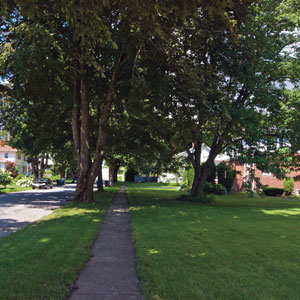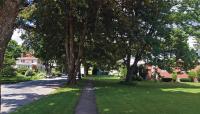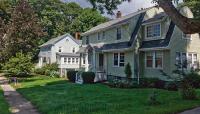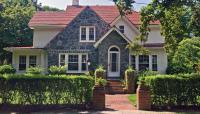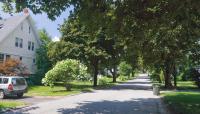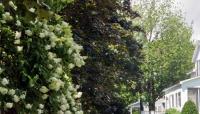The construction of the Million Dollar Bridge in 1916 increased the value of Portland’s outlying areas, leading to land speculation and new residential neighborhoods. Local politician and developer Frederick Wheeler Hinckley bought 85 acres adjoining his 21-acre South Portland home site to protect the character of the area. In 1921 Hinckley started developing Sylvan Site, and over the next decade invested more than $700,000. Although he planned 200 homes, he built only 37 due to the Great Depression. Unlike many local subdivisions, the grid-patterned neighborhood lacked scenic views or unusual topography. Its significance today lies in the custom architecture; as an amateur architect, Hinckley designed each home to be unique in Spanish, Colonial Revival, Tudor, Italianate, and Arts and Crafts styles. To unite the eclectic architecture and landscape, he used granite from his nearby quarry to build foundations, porch pillars, and stone walls, with many homes designed with generous verandas to transition from indoors to outdoors. As a compliment to the architecture, many homes had Colonial Revival-style backyard gardens with lattice fences, arbors, wooden benches, planters, and trellises. Most also had matching two-car garages. The neighborhood’s character is also defined by Hinckley’s use of consistent building setbacks, narrow sidewalks, grass esplanades, and the now mature Norway maple canopy that creates a dramatic sense of arrival.




